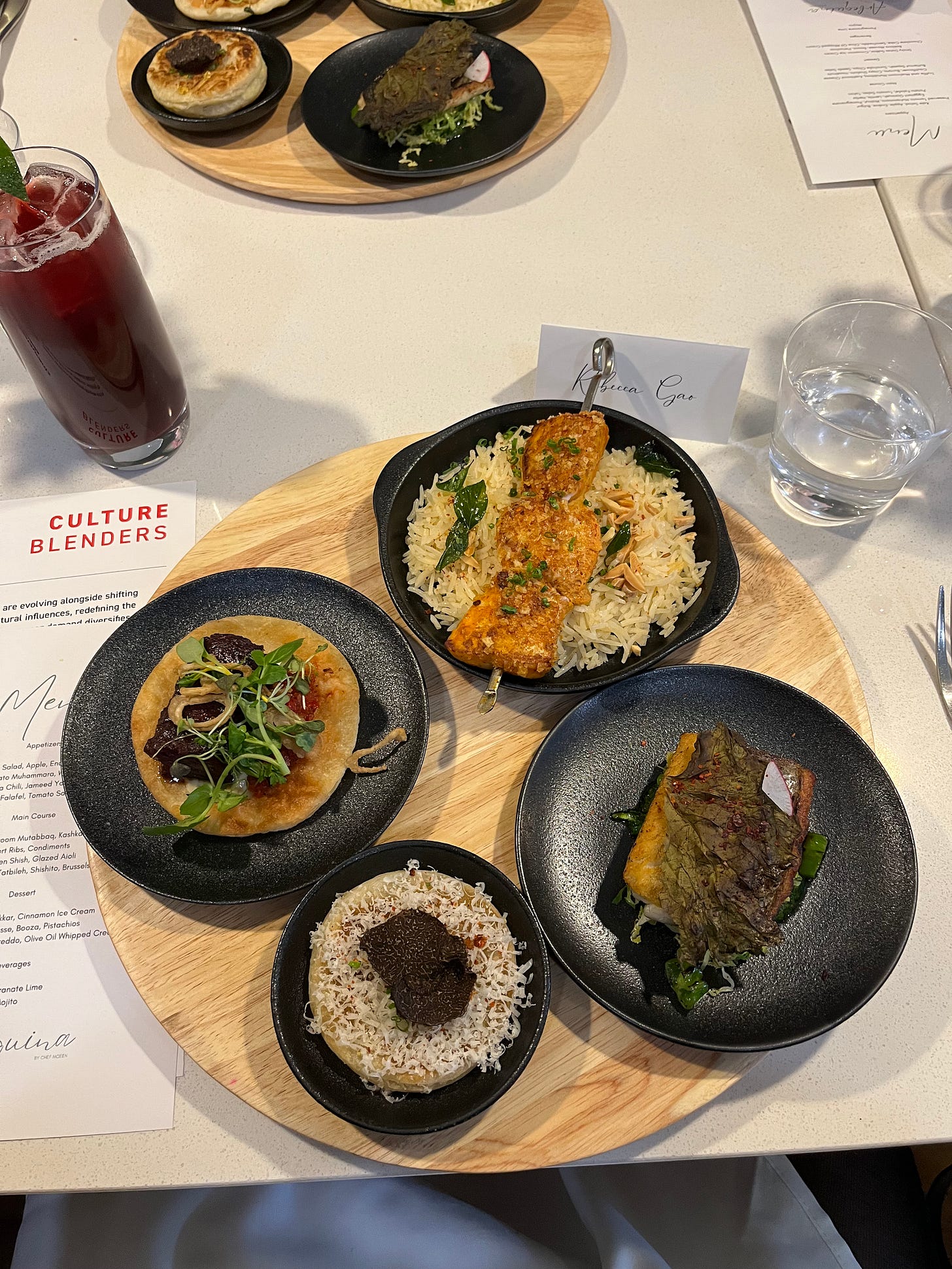Racialized diners and restaurants are the future of the food industry
Restaurant Canada's new report says that more than 80 percent of diners are comfortable trying new cuisines.
I recently attended a media preview for the RC Show at Arbequina on Roncesvalles (a really great family-owned restaurant serving Levantine food). There, a number of delegates from Restaurants Canada, a national advocacy and trade association, participated in a fireside discussion about Canada’s shifting demographics and what that means for restaurants.
One statistic stood out to me: 80 percent of Canadian diners polled are “comfortable” trying new cuisines and flavours, and about 90 percent said they are comfortable going to a restaurant and choosing dishes that are not from their background. And, at the RC Show event, speakers said that South Asian, Chinese and Middle Eastern communities tend to eat out the most.
Tastes have followed the demographic shift: data from OpenTable showed that the top 10 cuisines in Canada in 2022 were largely from other cultures. Thai, Mexican, Middle Eastern, Lebanese and Latin American were all trending cuisines. Ipsos found that the multi-cultural cuisine category has grown 24 percent since 2020.
“If you compare to 50 years ago, we have become more open to trying different ingredients and spices,” says Kelly Higginson, the CEO of Restaurants Canada. “I mean, I remember when quinoa was a big deal.”
The rise in demand for ethnic food is likely tied to the growing number of racialized people in the country: by 2041, about 41 percent of Canadians will be from a visible minority, according to StatsCan. “I think it says a lot to how adventurous that these people who are coming and starting a new life in a new country, often with a new language and often with a very different cultural perspective,” says Higginson.
At the same time, xenophobia is on the raise. The proportion of Canadians that believe the number of immigrants coming to Canada is “too many” rose by 13 percent from March to November 2023—the biggest jump in 20 years. There was a 7 percent increase in the number of hate crimes reported to police between 2021 and 2022. 44.5 percent of hate crimes in Canada are racially motivated, with South Asian and Black people facing higher rates. Immigration is a hot button topic right now: with affordability (or lack thereof) at the top of most Canadians’ minds, immigrants have become a scapegoat. Last year, the government cut the number of immigrants to alleviate “pressures on housing, infrastructure and social services.” (A bit of hope, because *I* need it: though xenophobia is growing, they are still a loud minority. It is just 35 percent of Canadians who think there are “too many” immigrants.)
For as long as I’ve been interested in restaurants and restaurant culture, people have spouted the adage that eating a culture’s food leads to more empathy. Anthony Bourdain famously said that “food may not be the answer to world peace, but it’s a start.”
It’s something I’ve pondered for a while. During COVID-19 when anti-Asian hate crimes were on the rise, I couldn’t help but think about the restaurants in Chinatown that were on the verge of going out of business because of declining sales. No one wanted to visit Chinatown or eat there in the early days of the pandemic. Chinese food has long been one of the most popular cuisines in Canada (and the world). If fearmongering and hate can turn Toronto’s bustling Chinatown into a ghost town, then clearly all the ink spilled about food curing racism was a load of BS, I thought.
And while I do still believe that exploring a culture’s cuisine is a great way to learn about that culture and foster more understanding, I can’t help but think about this tension between rising anti-immigrant sentiments and the growing desire for other cuisines.
So how can we support restaurant workers—53 percent of whom are immigrants? Higginson says the best thing we can do is to “go out there and experience” new cuisines.
As for the larger tension between rising anti-immigrant sentiments and rising desires for ethnic food, I don’t have any answers for how we solve this tension (aside from like, stop being racist). But as the data from Restaurants Canada shows, racialized diners and food from our cultures are the future of the restaurant industry.
Three bites I can’t stop thinking about:
🥟: Cheese and guava empanada from Pomarosa, a Venezuelan cafe on the Danforth. The empanada is the perfect blend of fruity and savoury. Also standout: their Arepas, which they serve during brunch, a true contender against breakfast sandwiches for best morning food.
🌰: Baklava Mousse, Booza, Pistachio from Arbequina. Perfectly sweet and crunchy and the dessert of your dreams.
🐟: Steelhead salmon with beetroot, smoked raspberry point oyster and horseradish “snow” from Enigma Yorkville. I’m not usually a fine-dining girlie, but the amazing presentation and blend of flavours in this dish is truly something special.




